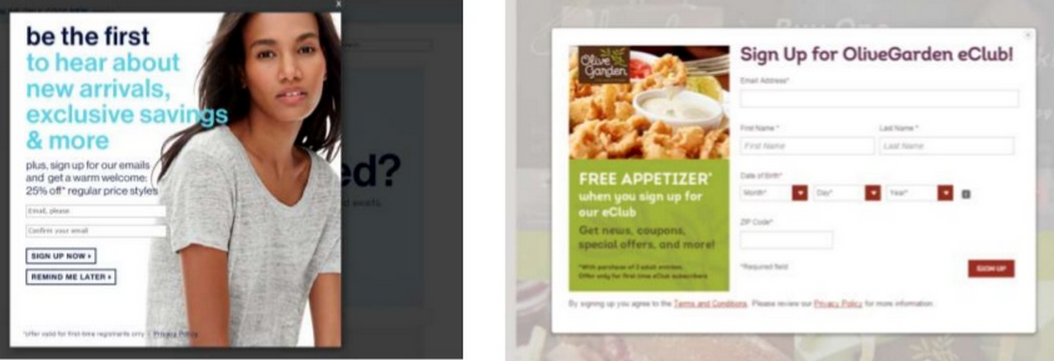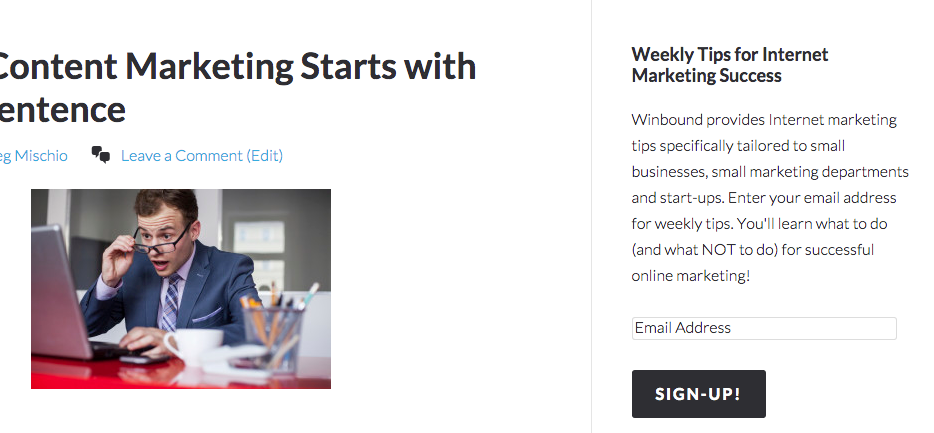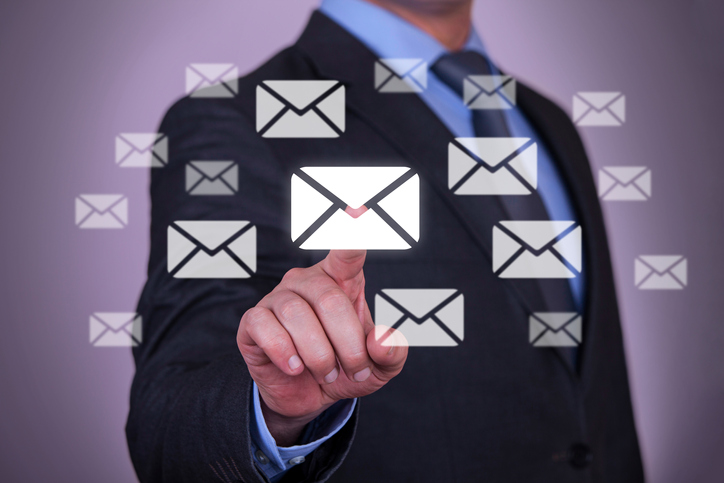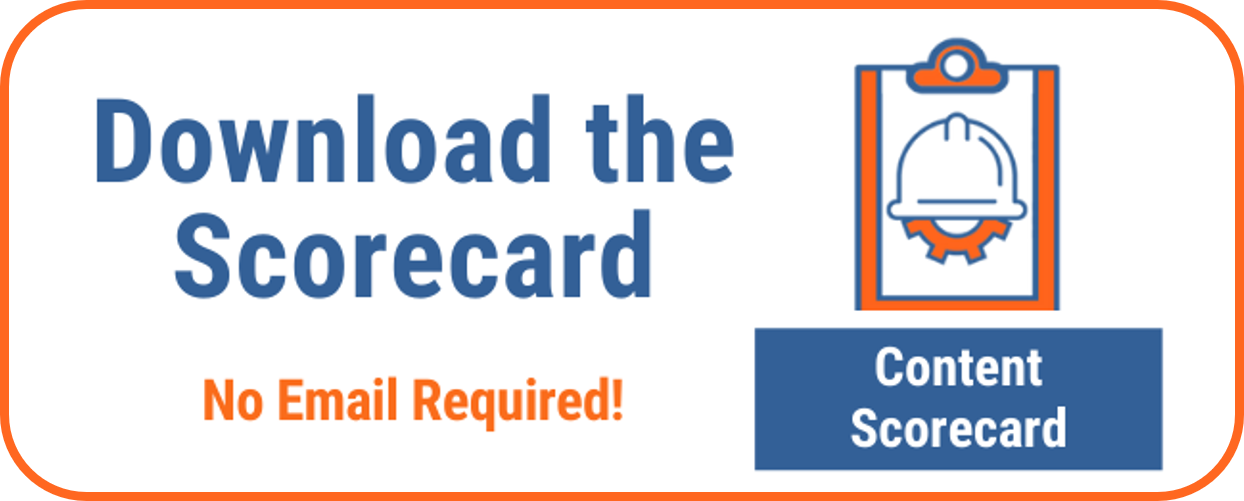You’ve put all your blood, sweat and tears into SEO and building a social media audience. But be warned: You don’t actually own these internet marketing assets. They could be yanked away from you in a heartbeat, which is why you should never forget the most reliable internet marketing asset on the planet: your email list.
I recently moved to the windy city of Chicago. Besides being home to many exceptional restaurants and craft breweries, it also has its fair share of fantastic digital marketers.
One such cat is Andy Crestodina of Orbit Media Studios, who invited me (and all of Chicago) to his monthly event called Wine and Web, in which Andy and his guests discuss digital marketing techniques that are, and aren’t, getting results.
This past week’s topic: email marketing. His guest was email guru Lisa Trifone (I’ll get to her in a bit)
Email marketing seems like an afterthought to most digital marketers, probably because email itself seems to be the oldest tool in the shed.
Before websites came onto the landscape, email was the glitzy new thing. However, the tool soon became overshadowed by websites, social media and mobile apps.
Yet email has persevered, and today, it’s more important than ever.
Email Marketing: A Unique Relationship With Clients and Prospects
I’ve heard Andy proclaim (and I’m paraphrasing wildly here): There’s no other medium that allows you to communicate directly with your potential visitors like e-mail. No company sits in the middle — and most importantly — you own the list.
Think about your sources of traffic: Google, Facebook, LinkedIn, Twitter. These are all for-profit companies that serve as intermediaries between you and your brand. Their first job is to make money for shareholders, not to send you visitors.
But email is a direct line between you and that potential reader.
No one can take it away from you, or limit how much you use it.
How Social Media Can Cut You Off: Companies new to digital marketing are always surprised when I tell them that Facebook’s algorithm could limit your access to only 10% of your fans. (Unless you advertise with them, of course.)
Twitter, LinkedIn, Instagram, Pinterest — or any other social media company on the planet — ultimately has this power. You truly don’t own the audience you build on their networks. They do. And they make the rules on how much you can contact them.
How Search Engines Can Cut You Off: Companies work relentlessly to build up the search engine ranking. And I think Google, for the most part, will reward honest effort and great content. But, still, they have the power to knock you out of the top ranking at any time.
An email list belongs to you and you alone. And beyond that enduring trait, email’s stock has risen even more thanks to the advent of mobile.
Mobile Means Email Is More Powerful Than Ever
People keep talking about how mobile is going to reshape how we do advertising. They keep expecting display ads or some other medium to propel mobile to the top of the heap. The truth is, the mobile explosion has already occurred. It arrived in the form of apps and — of course — our friend email.
Consider these stats, courtesy of HubSpot:
* Email opens on smartphone and tablets have increased 80% over the last six months.
* 80.8% of users report reading email on mobile devices.
Plenty of statistics support the rise of email usage on mobile, but really, just take a look around you. Everyone is on their cell phones, and they’re constantly checking social media apps, texts, and of course — email.
What is the first thing you do in the morning? If you’re a servant to the digital domain (and who isn’t?), you probably check that little screen. In fact, 6 am has the highest CTR of any hour, and Saturday has the highest CTR at over 9% (Sunday is second at just under 9%).
Most importantly, as Lisa Trebone notes in the slideshare later in this post, email marketing has the highest ROI in the digital marketing space.
Enough already – How do you grow that email list!

If you’re like my sixteen-year old daughter, this is the point in the conversation when you roll your eyes and say, “OK, OK, I get it. Can you just puhlease tell me how to grow my email mailing list?”
Many, many, many posts out there tell you how to grow your email list, and I’ll share some top links at the end of this post. But I will share some takeaways from the Web and Wine seminar that Lisa Trifone mentioned.
A little background on Lisa. She’s the Director of Marketing and Public Relations at Music Box Films here in Chicago. Her experience in email marketing includes work as a Marketing Consultant with ExactTarget, where she developed strategy and tactics for a wide range of companies.
Here are some takeaways from her presentation:
1. Engagement is the goal

Lisa touched on a number of components of email marketing in a clever hamburger analogy, which included infrastructure (email service), IP performance, list hygiene, spam, complaints — but the most important part was engagement.
Are people opening and reading your emails? Are they clicking through on your offers? Content is king here, but just important are the type of click-through offers that engage your readers at the next level.
As for how to build your list, start with the content you’re generating. Is it engaging enough to get someone to sign up for your email list? Does the content focus on solutions to their problems? Is it delivered in an appealing format they’re happy to receive?
2. Acquisition opportunities

Lisa mentioned some key strategies for building your list. A few items that jumped out at me:
Popovers – Considered highly effective, these are those little boxes that appear on your screen and include a sign-up form. If they include a compelling reason why signing up for future updates is so important, it can be highly effective.
Social Media Promos – Use your various social media outlets to boost sign-ups. If you’re worried it will come off as salesy or spammy, don’t. Again, if you’re offering good engaging content, people will see this as a benefit.
In-store / Physical – Why restrict your sign-ups to online opps? Lisa shared samples, everything from in-store signage, receipts — even ketchup packets — as vehicles for urging people to sign-up for emails.
Text to Join – A nice service used by restaurants in particular is allowing people to text their email in to subscribe to an email service. Go mobile!
3. Website placement of sign-up form

Want to boost sign-up on your website? Make the opt-in form prominent, compelling, and present on every page. The footer is ok, but the header is top dog. Make sure the sign-up process is clean and hassle-free. Give them an incentive to act – perhaps a sign-up allows them access to a special white paper, or a discount if you’re a retailer? Get creative.
Start building your list today
Email lists, like all digital marketing tools, take time and effort to build. You need patience and a plan. Prioritize your tactics for building your email list, and implement them one at a time. As you do this, test to see which strategy has created the biggest bump.
Based on your test results, refine your strategy. Then repeat. Building a strong email audience is a continuous process, not a one-time implementation. Yes, it’s work, but why not expend devote your energy to a proven winner on the digital landscape?
If you haven’t gotten in the email game before, do it now. If you’ve tried and given up, isn’t it time for a do-over?
Find out how your content and conversion ranks with our interactive version of the Content Scorecard you can fill in yourself – no email required for download.

